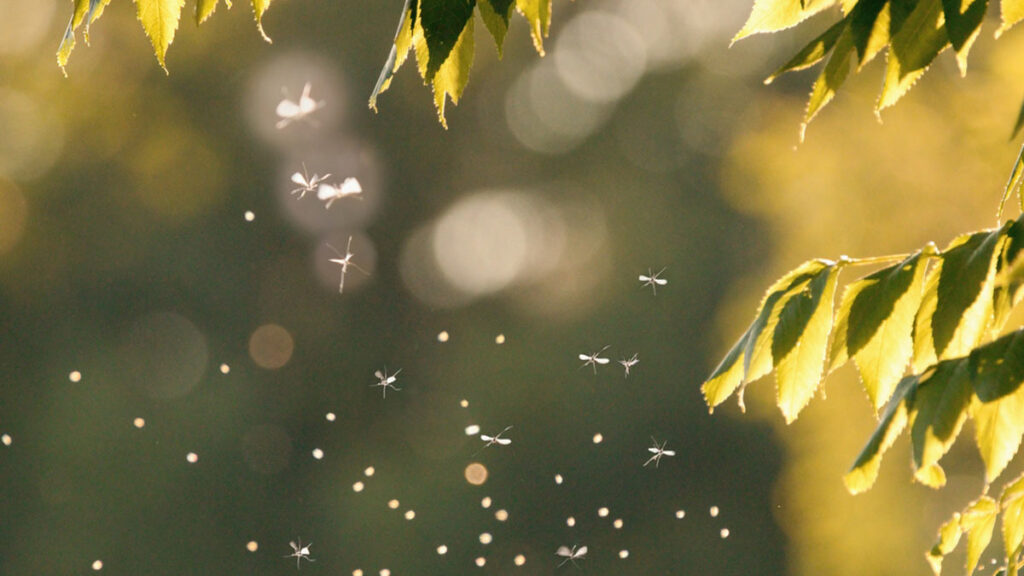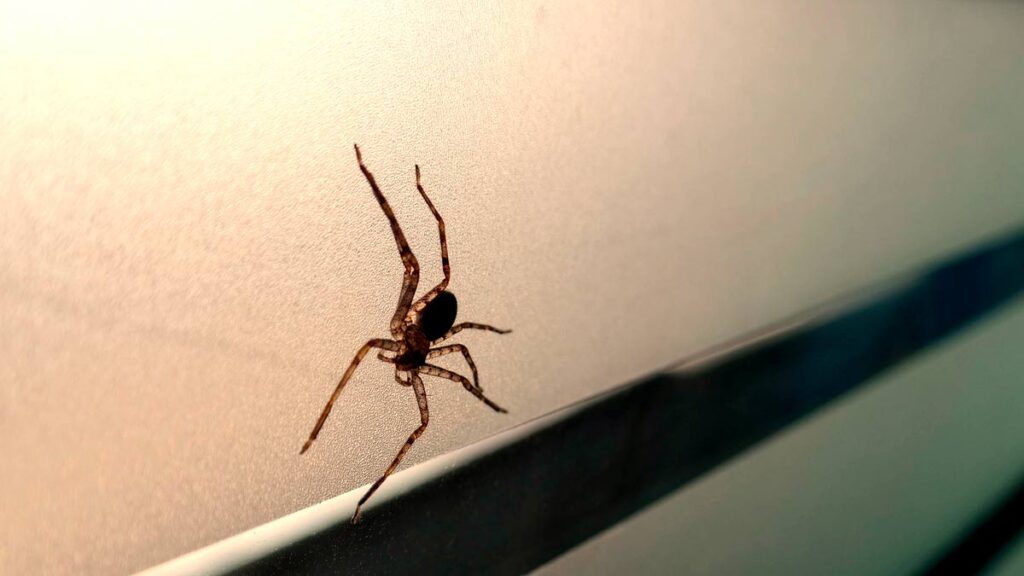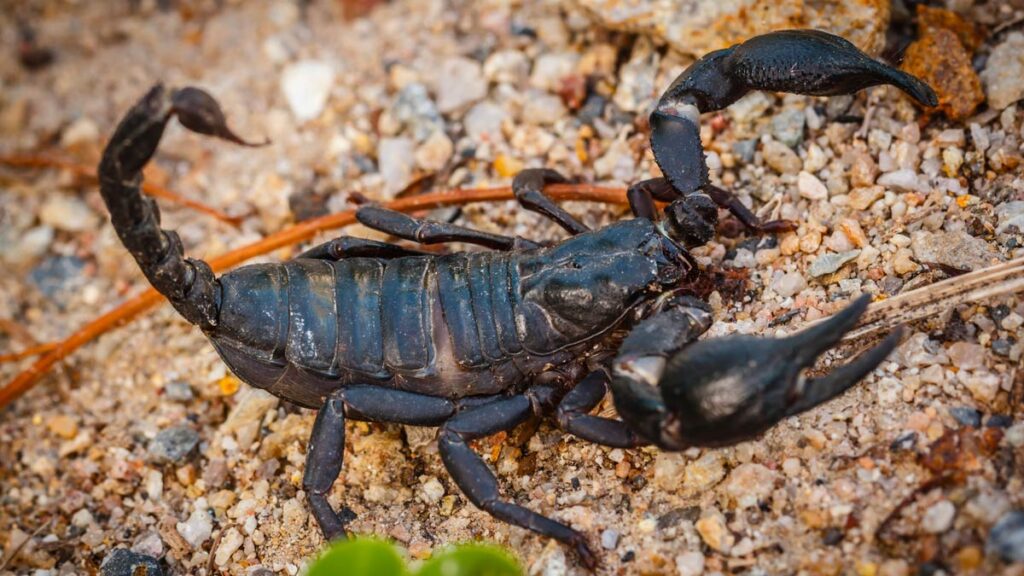
How to Prevent Mosquito Bites in Florida
A Comprehensive Guide
Updated on: January 2024

Florida has increasingly been threatened with the persistent concern of mosquitoes. These insects are a source of itchy bites as well as carry the risk of transmitting various diseases. West Nile virus, Eastern equine encephalitis, and Zika are among the ailments potentially spread by mosquitoes in Florida. Given the health risks, along with the sheer discomfort of being bitten, understanding and employing effective prevention methods becomes important for residents and visitors alike. Knowledge of mosquito behavior, habitat, and local conditions allows for individuals to take the right precautions and ensure that Floridian’s remain safe.
Find What You Need
Understanding Florida’s Mosquitoes
Florida’s mosquito landscape is as diverse as its ecosystems. With over 80 species present, understanding their behavior can make a great difference in mitigating bites.
Peak Activity Times
Mosquitoes in Florida are notoriously more active during the twilight hours – dawn and dusk. The cooler temperatures and decreased wind during these times offer ideal conditions. For example, the ‘Aedes aegypti’ mosquito, a prominent vector of dengue and Zika, primarily bites during the day, but its peak biting times are early in the morning and just before sunset. Hence, if planning outdoor activities, it’s important to be especially cautious during these peak hours.
Specific Mosquito Species
Florida’s diverse environment provides a habitat for various mosquito species, each with unique behaviors. The ‘Aedes aegypti’ and ‘Aedes albopictus’ are especially concerning due to their ability to transmit diseases like Zika, dengue, and chikungunya. Another prolific biter is the ‘Anopheles quadrimaculatus’, which can carry the malaria parasite. But arguably, the most aggressive of Florida’s mosquitoes is the ‘Psorophora ciliata’, often referred to as the “gallinipper”. It has a bite that can feel like a pinch and is a species locals and visitors should be aware of.
Mosquito Habitats and Breeding Grounds
Florida has an abundance of water bodies including marshes and backyard pools which provide an ideal breeding ground for mosquitoes. Standing water is particularly problematic. A tiny amount, even as little as a bottle cap full, can become a breeding site for species like the ‘Aedes aegypti’. Therefore, regular water drainage and monitoring of common household items like flower pots, old tires, and children’s toys can significantly reduce mosquito populations. Rain is a problematic source in Florida because while it can wash away existing mosquito larvae, the puddles left behind become fresh breeding grounds, especially if the water remains stagnant for a few days. Monitoring and managing these potential habitats, particularly post-rainfall, is needed to control mosquito populations.
Take Away
Navigating the mosquito challenge in Florida is a blend of innovation and time-tested strategies. The focus isn’t just on comfort but also on health. By staying informed and proactive, residents and visitors alike can enjoy Florida’s beauty without the unwelcome threat of mosquitoes. Your vigilance ensures a safer, more enjoyable experience in the Sunshine State.
Mosquito-Prone Regions in Florida
Florida has a variety of landscapes and offers various micro-environments each with its own mosquito challenges.
Coastal vs. Inland Regions
Coastal regions, due to their saltwater habitats, often host mosquitoes like the ‘Aedes taeniorhynchus’ or the black salt marsh mosquito. These pests are attracted to the brackish waters common in coastal estuaries. They can fly long distances and stalk beaches at night so be sure to be prepared. In contrast, inland regions, particularly around freshwater lakes, streams, and swamps, see more of species like the ‘Culex nigripalpus’, a known carrier of the West Nile virus. Freshwater is their preferred breeding site. However, brands like OFF! and Cutter offer repellents such as the ‘OFF! Deep Woods’ and ‘Cutter Backwoods’, ranging from $5 to $10, are specifically designed to fend off aggressive coastal mosquitoes.
Areas with Higher Mosquito Populations
The Everglades, a vast tropical wetland in southern Florida, is a hotbed for mosquito activity due to its expansive marshes and regular water flow. Similarly, regions around Lake Okeechobee and the St. Johns River are known for higher mosquito populations, mainly due to stagnant water pockets that become breeding havens. For residents in or travelers to these areas, investing in mosquito nets and mesh for nighttime protection is necessary along with repellant. Products like the ‘Coghlan’s Mosquito Net’, priced around $10-$15, offer a budget-friendly yet effective barrier against these pests. Similarly, cities with a history of poor water drainage, especially after heavy rains, can see spikes in local mosquito populations. It’s always wise to check local advisories when traveling, as some counties might even offer free mosquito control services during outbreaks.
Natural and Chemical Mosquito Repellents
There is a broad spectrum of choices when it comes to modern repellents. Repellants can range from having chemicals like DEET, being natural alternatives, or even tech-based solutions.
DEET-Based Repellents
DEET, or diethyltoluamide, has been a significant factor in fighting mosquitoes for decades. The reason for its popularity and recommendation by the Centers for Disease Control and Prevention (CDC) is its proven efficacy. When applied, DEET confuses mosquitoes, making it difficult for them to land and bite. Brands like ‘OFF!’, ‘Repel’, and ‘Sawyer’ offer DEET-based repellents that promise protection ranging from four to eight hours, though reapplication is advised if one sweats profusely or after swimming. Generally, a product with 10% to 30% DEET concentration is ideal, offering protection without overexposure. Costs for these repellents can range from $4 to $15, depending on the size and brand.
Natural Alternatives to DEET
With rising consumer interest in organic products, several natural repellents have emerged. Lemon eucalyptus oil is a leading alternative recognized by the CDC. Repellents with this ingredient, like ‘Repel Lemon Eucalyptus’, priced at around $5-$10, can offer protection for up to six hours. Another popular ingredient is citronella, found in many sprays and candles. However, it’s worth noting that while these natural alternatives can be effective, their protection duration is often shorter than DEET-based products.
Ultrasonic Mosquito Repellent Devices
These gadgets, which emit high-frequency sounds that purportedly repel mosquitoes, have flooded the market with mixed reviews. Research, including studies from the University of Florida, suggests that many of these devices have minimal if any, repellent effects on mosquitoes. Devices like ‘BRISON Ultrasonic Pest Repeller’, costing around $20-$40, have varying feedback from users. Some individuals swear by their efficacy, while others see little to no difference. Given the lack of consistent scientific backing, relying solely on ultrasonics in mosquito-heavy areas might not be the best choice.
Protective Measures Against Mosquitoes
Protecting oneself from mosquitoes is not only about repellents but also about adopting certain behaviors and sartorial choices, all of which can play a significant role in defense.
Clothing Choices
Long-sleeved shirts and long pants reduce the area of exposed skin, thus diminishing potential bite sites. Light-colored clothing is especially recommended. Mosquitoes are attracted to darker shades as they absorb more heat, making individuals in darker attire more noticeable to these pests. Brands like ‘Columbia’ and ‘ExOfficio’ offer clothing lines, often priced between $40 and $100, specifically designed to be lightweight, breathable, and mosquito-resistant, some are even treated with permethrin, a repellent.
Using Mosquito Nets and Screens
For those who love the outdoors or sleep with open windows, mosquito nets are indispensable. Brands like ‘Even Naturals’ offer mosquito nets that fit around beds or hammocks, priced around $15-$30. They’re particularly necessary in high mosquito-density areas, providing a barrier during peak biting times. Meanwhile, for homes, screens are the first line of defense. Ensuring windows and doorways are equipped with fine mesh screens, free from holes or tears, can dramatically cut down on indoor mosquito invasions. Companies like ‘Phifer’ offer mosquito-proof screening materials that are durable and effective, typically priced around $0.50 to $2.50 per square foot, making it a worthy investment for a bite-free living environment.
Landscaping and Environmental Deterrents
In attempting to create a mosquito-free environment, certain plants and yard plans can be utilized as natural repellants.
Mosquito-Repellent Plants
Introducing plants that naturally repel mosquitoes is an effective way to combat these insects. Citronella grass, which is the base for citronella oil found in many repellents, is a top choice. Its lemony scent deters mosquitoes. Other choices include lavender, marigold, and the clearly named ‘mosquito plant’ (a type of geranium). These plants not only fend off the pests but also add vibrancy and fragrance to gardens. A visit to local nurseries like ‘Florida Nursery, Growers and Landscape Association’ can yield these plants with prices ranging from $5 to $20, depending on size and variety.
Yard Maintenance and Breeding Ground Prevention
Keeping a garden or yard well-maintained is a strategic move against mosquitoes. Overgrown vegetation, thick shrubs, or tall grass can provide resting places for mosquitoes during the heat of the day. Regular trimming is therefore essential. Another step is being sure there is no standing water in your environment. From clogged gutters to unused flower pots, any container can become a breeding ground for mosquitoes in just a few days. It’s crucial to drain any stagnant water at least once a week. For larger water features like ponds, consider using products like ‘Mosquito Dunks’, which contain bacteria harmful only to mosquito larvae and not to other creatures. Typically costing between $10 to $20 for a pack, it’s a small price to pay for ensuring your water feature remains a serene spot rather than a mosquito hub.
Other Innovative and Helpful Methods
The efforts to avoid mosquitoes have led to the exploration of various unconventional methods, ranging from harnessing the environment to considering dietary habits.
The Power of Fans and Wind
Mosquitoes, despite their tenacity, aren’t particularly strong flyers. Their weak flying capabilities can be our advantage. By strategically placing oscillating fans on your patio or deck, you can create an environment that’s challenging for mosquitoes to navigate. The constant airflow not only disperses the carbon dioxide we exhale, which attracts mosquitoes, but also physically keeps them at bay. Brands like ‘Lasko’ and ‘Honeywell’ have outdoor fans that work well for this purpose, and they usually range from $50 to $150, depending on size and features.
Dietary Considerations and Myths
Over the years, there’s been much speculation on how diet impacts mosquito attraction. Some believe that ingesting garlic or vitamin B supplements can repel mosquitoes. However, scientific evidence on this is limited and inconclusive. Most studies, including those from the University of Florida, suggest that these dietary changes aren’t reliable repellents. Additionally, the commonly held belief that certain blood types, especially Type O, attract mosquitoes more is partially true. Some studies indicate that people with Type O blood might be bitten slightly more than those with Type A, B, or AB. Still, it’s essential to understand that blood type is just one of many factors influencing mosquito attraction, and everyone should take precautions regardless of their blood group.
Mosquito Control in Florida
Mosquito control is a collaborative endeavor, demanding both individual and community effort, especially in a place as mosquito-rich as Florida. When residents and visitors alike are informed and prepared, the collective benefit is significant.
Community Resources and Services
Florida’s unique geography and climate have necessitated robust measures for mosquito control. Many counties in the state have dedicated Mosquito Control Districts, entities responsible for managing and reducing local mosquito populations. These districts offer services like larval habitat source reduction, adult mosquito spraying, and public education initiatives. Services often include sending teams to inspect residential properties for breeding sites, and treating them if necessary. Residents can contact their respective districts to report mosquito problems or to request inspections. Furthermore, products such as larvicide briquettes are sometimes distributed for free or at discounted rates to help individuals treat their own properties.
Mosquito Diseases and Transmission in Florida
As mentioned, Florida’s mosquitoes are potential carriers of diseases like West Nile virus, Dengue, Chikungunya, and Zika. While the majority of mosquitoes don’t carry these diseases, the presence of even a small infected population can pose risks. The Florida Department of Health regularly monitors these diseases and provides updates on detected cases, ensuring that the public remains informed about potential outbreaks.
Precautions for Travelers
For those visiting Florida, it’s imperative to stay informed and take precautions. Travelers should check for any health advisories related to mosquito-borne illnesses before their trip. Using repellents, wearing appropriate clothing, and staying in accommodations with screens or air conditioning are all effective strategies. For those visiting more natural settings, like the Everglades, consider camping gear treated with permethrin, a repellent that remains effective through several washes. Brands like ‘Sawyer Products’ offer permethrin sprays priced around $10-$15 that can be applied to clothing and gear prior to your travels.


